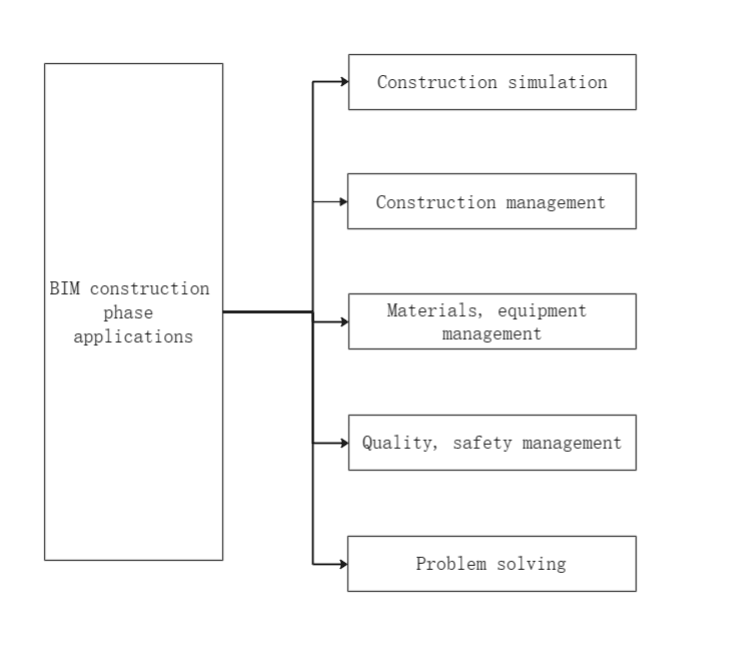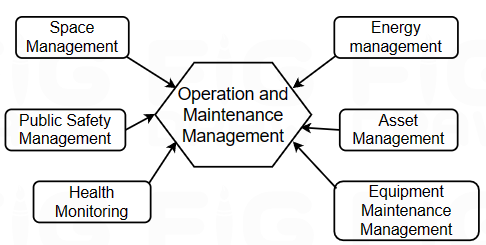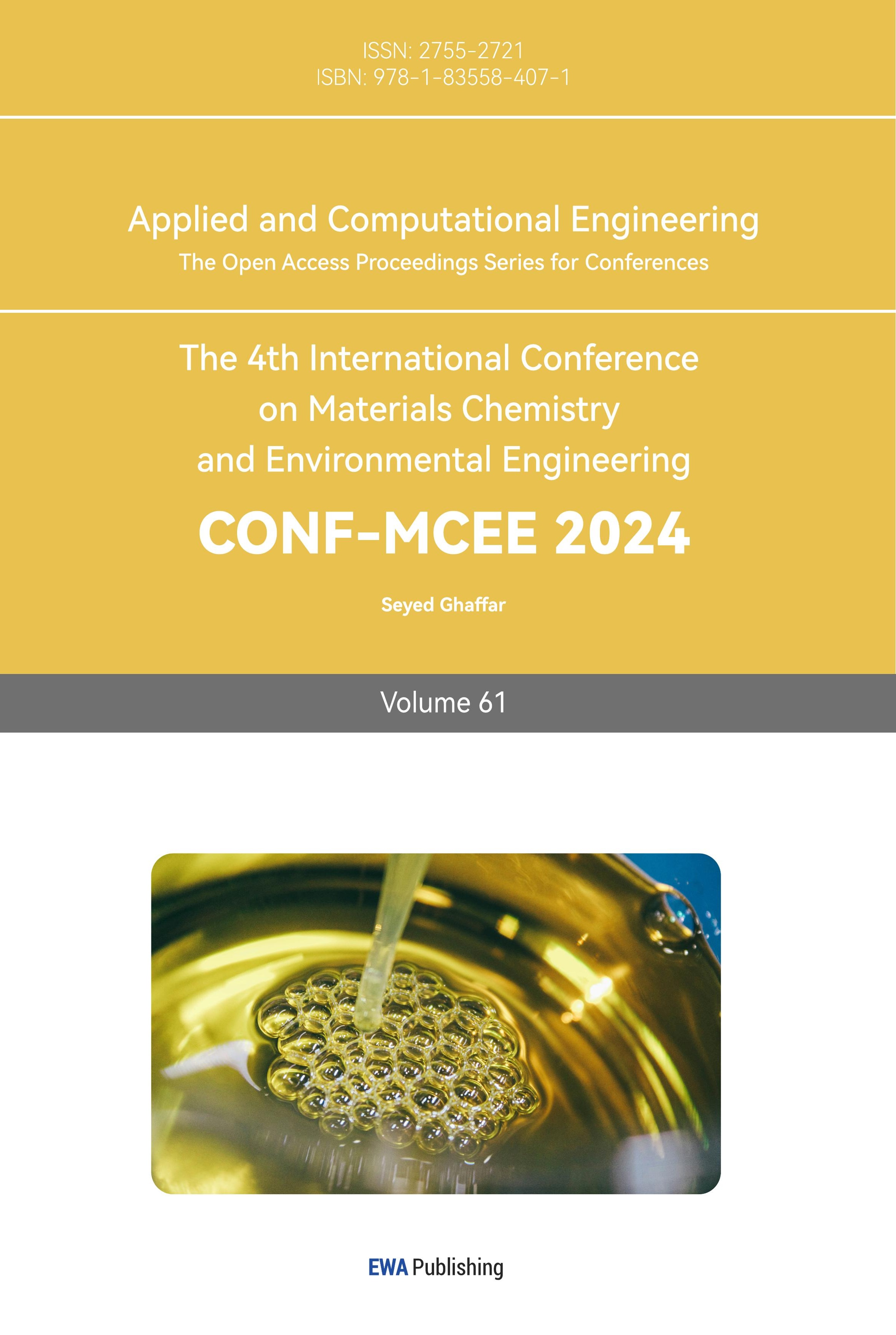1. Introduction
In China, the construction industry is experiencing a rapid pace of digital and intelligent transformation. With the wide application of information technology, intelligent buildings have developed rapidly, while Building Information Modeling(BIM) technology has become the core technology to promote the transformation of China’s construction industry to digitalization and the main endogenous driving force for the sustainable development of the construction industry . In order to achieve a comprehensive improvement in the quality of construction projects, in February 2023, the Central Committee of the Communist Party of China (CPC) and the State Council issued the “Outline for the Construction of a Stronger Quality Country” [1], which explicitly pointed out that it is necessary to accelerate the research and development, innovation, and application of digital technologies such as building information modelling (BIM).
The research of scholars Huang Xinyao [2] and others shows that the information level of operation management can be further improved by establishing the calculation model of energy consumption and carbon emission, calculating and analysing the energy consumption and carbon emission of the BIM life cycle of decorative materials, and optimising the decision-making system through the integration of global information technology. Wang Bochun [3] and others discussed the application of BIM technology in the management of assembled buildings by combining relevant practical experience and proposed the application of BIM technology in the design, production, construction and operation and maintenance phases, respectively. Xiaoyu BI and others [4] researched the application of the whole-process control of the construction of highway bridges based on BIM technology. By using BIM technology to study the latest research on fire emergency planning and the deficiencies of existing plans, new ideas are provided for the application of BIM technology in fire emergency planning.
2. Overview of BIM technology research in intelligent building technology
BIM, or Building Information Modelling System, unifies information from all areas of an engineering project into a single building model. The model contains all the information, functions and performance analyses of different disciplines and features visualisation, symbolisation, parameterisation, integration, simulation and optimisation. In the field of intelligent buildings, BIM research covers three aspects: building information modelling, which digitally expresses and meets the requirements of the project; building information modelling application, which includes the communication and interaction of design, construction, operation and maintenance and other engineering operations; and building information management, which runs the business processes of the whole project by sharing the model information. In addition, BIM technology can digitise and virtualise buildings, apply building information data to the planning, operation and maintenance of engineering projects, and provide a basis for all aspects of building design and construction. At the same time, BIM visualisation management can visualise construction management in real time, control the macro operation of the construction system in real time, and improve engineering efficiency and intuition.
3. Application of BIM technology in engineering construction
The use of BIM technology in the construction phase of a project can effectively improve the efficiency and quality of engineering construction and reduce construction risks and errors. By using BIM technology, engineers can better plan, execute, and complete engineering projects, thereby improving project delivery.
The main applications of BIM during the construction phase are shown in Figure 1:

Figure 1. Key applications of BIM in the construct phase.
BIM creates 3D models that contain accurate building data. Using BIM to simulate construction allows for early detection and resolution of potential problems, promoting workplace safety and efficiency during construction. With BIM, proactive construction planning can be implemented to reduce potential future construction problems. Based on Building Information Modelling (BIM), construction teams are able to create comprehensive construction plans and sequences while resolving conflicts and providing real-time construction schedule updates [5]. As a result, construction teams can allocate resources more efficiently, streamline work coordination, and save costs and time.
BIM can be integrated with inventory and supply chain management systems to assist the construction team in tracking and managing the supply, distribution and use of materials and equipment. This reduces wastage of materials and equipment, thereby ensuring a seamless construction process. In addition, building information modelling can be integrated with safety management systems to enable the construction team to identify and address potential risks and hazards on the construction site. In addition, building information modelling (BIM) can facilitate quality control, reducing construction defects and quality issues by verifying component quality and consistency. In addition, building information modelling improves project change management and problem resolution. Through the use of BIM software, change requests and issues can be quickly documented, tracked, collaborated on, and communicated to all parties involved, facilitating the timely implementation of decisions and adjustments [6].
4. Application of BIM technology in intelligent building operation and maintenance
Figure 2 shows the six key application points of BIM in O&M management. Its purpose is to meet the basic use, safety and comfort needs of personnel in the building space and to enhance the comprehensive benefits of the building project [7].

Figure 2. Six key aspects of O&M management.
Building Information Modelling (BIM) has six principal areas of application in Operations and Maintenance (O&M) management. These include space management, asset management, facility maintenance management, health monitoring, public safety management and energy management. Various item details, such as supplier, manufacturing date, contact information, maintenance date and location, are integrated into the BIM model by managers. Extracting information through the network platform can assist property managers in maintaining equipment. This includes reminding them to regularly replace accessories and providing early warnings for components that show signs of excessive use. Additionally, more intelligent solutions, such as intelligent control, can also be implemented [8].
Dealing with a range of intricate pipelines in the project poses a considerable challenge for property managers. They must possess an adequate understanding of the blueprints and infrastructure. However, personnel changes or missing information can exacerbate the issue and make it even more problematic. The utilization of Building Information Modelling (BIM) can provide effective solutions to various challenges. For example, BIM facilitates the visualisation of concealed components through three-dimensional perspectives. Information can be securely archived and exchanged, allowing for accurate data provision during future tenancy renovations. Furthermore, BIM can assist in delineating restricted private modifications.
In project construction, the management of security and safety is crucial. By combining video surveillance with BIM, project personnel can enable security personnel to monitor the required locations more efficiently and promptly, allowing for quicker assessment of situations. Additionally, related systems can be associated in the event of emergencies. The system can enhance the detection of security personnel and improve command collaboration in emergency situations. It enables swift police notification and allows for analysis of people flow, facilitating the calculation of appropriate evacuation and rescue routes during fire and other emergency evacuations [9].
5. Application of BIM Technology in Energy Saving and Environmental Protection of Intelligent Buildings
The use of BIM technology in building design and planning enables designers to conduct accurate analyses of energy consumption and carbon emissions. By combining BIM with virtual reality or augmented reality, designers can simulate and evaluate the impact of environmental factors on energy consumption, such as solar radiation and ventilation, in order to select more energy-efficient schemes. BIM also considers factors like energy supply and biodiversity, making the design more comprehensive. Additionally, BIM can establish a database for carbon dioxide emissions, allowing for simulation and assessment of emission reduction throughout the building’s life cycle. As the database improves, more data and sources will be available for future simulation and analysis. The application of BIM in the early stages of building design supports sustainable development goals and promotes energy efficiency and emission reduction.
In addition, designers can utilise BIM technology to integrate building material information and plan for future demolition, refurbishment and material recycling of buildings, thereby reducing construction waste, saving costs and reducing carbon footprint [10]. For example, the DGNB sustainable building assessment system can obtain the required certification information directly from the BIM model, reducing the certification workload and improving the quality and consistency of sustainability-related information.
6. Application of BIM Technology in Intelligent Building Safety
BIM technology plays a crucial role in improving construction safety management through several key applications. Firstly, it enables the establishment of a dynamic four-dimensional model for construction, allowing for the simulation of the construction process and effective identification of potential safety hazards. Additionally, BIM technology facilitates the formulation of safety management measures by helping managers quickly identify sources of danger and create corresponding safety plans. Moreover, it aids in the identification of hazardous sources by providing a multi-dimensional model for construction personnel to assess safety risks and collect relevant information. Lastly, BIM technology provides intelligent safety protection features, including the development of targeted safety precautions and real-time monitoring, which significantly enhances the effectiveness of safety management and monitoring. Overall, the application of BIM technology not only improves construction safety but also reduces resource consumption and enhances the emergency response ability of construction personnel, thus promoting overall safety and efficiency in construction projects.
7. Future prospects of BIM technology in intelligent building technology
The construction industry faces several important trends in the future development of BIM technology: the popularity of mobile applications, which enable construction practitioners to access information anytime, anywhere; the application of digital and cloud computing technologies to obtain first-hand project data and to design and analyse; and the increased importance of flat collaboration models to share results and maximise the value of BIM in the project lifecycle. These trends will drive the widespread use and popularity of BIM technology in the construction industry.
8. Conclusion
BIM technology will continue to play an important role in the future. As technology continues to evolve and be applied, BIM technology will continue to evolve and innovate to meet the changing needs of the architectural, engineering and construction industries. Architects, engineers and construction personnel need to continue to learn and master BIM technology to improve their professional competence and competitiveness.
References
[1]. BIM Intelligent Construction Leads Real Estate Enterprises to High Quality Development[J]. China Construction Information Technology,2022, (16):18-20.Zhao Xiong, Wang Hanzhuang, Dan Yang. Research on quality management of green building design based on BIM technology[J]. China Building Metal Structure, 2022, (3):105-107.
[2]. X. Huang, Y. Xu and S. Wu, “Research on Application of BIM Technology in Building Carbon Emission Intelligent Monitoring System,” 2022 IEEE International Conference on Electrical Engineering, Big Data and Algorithms (EEBDA), Changchun, China, 2022, pp. 458-462, doi: 10.1109/EEBDA53927.2022.9744904.
[3]. Wang B. Research on the Application of BIM Technology in Assembly Building Management[C]//Institute of Management Science and Industrial Engineering.Proceedings of 2018 International Workshop on Advances in Social Sciences(IWASS 2018).Francis Academic Press,2018:729-732.
[4]. Xiaoyu BI,Jia WANG,Jingyan ZHANG.THE Exploration of BIM Technology Application in The Building Fire Emergency Plan[C]//International Conference on Civil Engineering, Architecture and Building Materials.2013
[5]. Yun Zhou, Xiao Wei, Ying Peng, “The Modelling of Digital Twins Technology in The Construction Process of Prefabricated Buildings”, ADVANCES IN CIVIL ENGINEERING, 2021. (IF: 3)
[6]. Wang Hao,Fang Xiaoyu. Standardised application of BIM technology in intelligent building operation and maintenance management[C]//China Intelligent Engineering Research Association Intelligent Learning and Innovation Research Working Committee. Proceedings of the Academic Forum on “2022 Intelligent Planning and Management”. [Publisher unknown], 2022:6. DOI:10.26914/c.cnkihy.2022.011682.
[7]. Luan Lin. BIM application to promote the wisdom of building operation and maintenance - BIM technology in the field of building operation and maintenance application exploration and practice[J]. China Construction Informatisation,2023(18):54-60.
[8]. Heng Sun, Zhe Liu,”Research on Intelligent Dispatching System Management Platform for Construction Projects Based on Digital Twin and BIM Technology”,ADVANCES IN CIVIL ENGINEERING,2022.(IF: 3)
[9]. YAO Tianqi. Technical management of structural speciality manager[J]. Petrochemical Technology,2023,30(10):116-118.
[10]. Xiaowan Zhao, Chun-Ping Gao, “Research on Energy-Saving Design Method of Green Building Based on BIM Technology”, SCIENTIFIC PROGRAMMING, 2022.
Cite this article
Zhang,Y.;Qu,T.;Yao,T.;Gong,Y.;Bian,X. (2024). Research on the application of BIM technology in intelligent building technology. Applied and Computational Engineering,61,29-34.
Data availability
The datasets used and/or analyzed during the current study will be available from the authors upon reasonable request.
Disclaimer/Publisher's Note
The statements, opinions and data contained in all publications are solely those of the individual author(s) and contributor(s) and not of EWA Publishing and/or the editor(s). EWA Publishing and/or the editor(s) disclaim responsibility for any injury to people or property resulting from any ideas, methods, instructions or products referred to in the content.
About volume
Volume title: Proceedings of the 4th International Conference on Materials Chemistry and Environmental Engineering
© 2024 by the author(s). Licensee EWA Publishing, Oxford, UK. This article is an open access article distributed under the terms and
conditions of the Creative Commons Attribution (CC BY) license. Authors who
publish this series agree to the following terms:
1. Authors retain copyright and grant the series right of first publication with the work simultaneously licensed under a Creative Commons
Attribution License that allows others to share the work with an acknowledgment of the work's authorship and initial publication in this
series.
2. Authors are able to enter into separate, additional contractual arrangements for the non-exclusive distribution of the series's published
version of the work (e.g., post it to an institutional repository or publish it in a book), with an acknowledgment of its initial
publication in this series.
3. Authors are permitted and encouraged to post their work online (e.g., in institutional repositories or on their website) prior to and
during the submission process, as it can lead to productive exchanges, as well as earlier and greater citation of published work (See
Open access policy for details).
References
[1]. BIM Intelligent Construction Leads Real Estate Enterprises to High Quality Development[J]. China Construction Information Technology,2022, (16):18-20.Zhao Xiong, Wang Hanzhuang, Dan Yang. Research on quality management of green building design based on BIM technology[J]. China Building Metal Structure, 2022, (3):105-107.
[2]. X. Huang, Y. Xu and S. Wu, “Research on Application of BIM Technology in Building Carbon Emission Intelligent Monitoring System,” 2022 IEEE International Conference on Electrical Engineering, Big Data and Algorithms (EEBDA), Changchun, China, 2022, pp. 458-462, doi: 10.1109/EEBDA53927.2022.9744904.
[3]. Wang B. Research on the Application of BIM Technology in Assembly Building Management[C]//Institute of Management Science and Industrial Engineering.Proceedings of 2018 International Workshop on Advances in Social Sciences(IWASS 2018).Francis Academic Press,2018:729-732.
[4]. Xiaoyu BI,Jia WANG,Jingyan ZHANG.THE Exploration of BIM Technology Application in The Building Fire Emergency Plan[C]//International Conference on Civil Engineering, Architecture and Building Materials.2013
[5]. Yun Zhou, Xiao Wei, Ying Peng, “The Modelling of Digital Twins Technology in The Construction Process of Prefabricated Buildings”, ADVANCES IN CIVIL ENGINEERING, 2021. (IF: 3)
[6]. Wang Hao,Fang Xiaoyu. Standardised application of BIM technology in intelligent building operation and maintenance management[C]//China Intelligent Engineering Research Association Intelligent Learning and Innovation Research Working Committee. Proceedings of the Academic Forum on “2022 Intelligent Planning and Management”. [Publisher unknown], 2022:6. DOI:10.26914/c.cnkihy.2022.011682.
[7]. Luan Lin. BIM application to promote the wisdom of building operation and maintenance - BIM technology in the field of building operation and maintenance application exploration and practice[J]. China Construction Informatisation,2023(18):54-60.
[8]. Heng Sun, Zhe Liu,”Research on Intelligent Dispatching System Management Platform for Construction Projects Based on Digital Twin and BIM Technology”,ADVANCES IN CIVIL ENGINEERING,2022.(IF: 3)
[9]. YAO Tianqi. Technical management of structural speciality manager[J]. Petrochemical Technology,2023,30(10):116-118.
[10]. Xiaowan Zhao, Chun-Ping Gao, “Research on Energy-Saving Design Method of Green Building Based on BIM Technology”, SCIENTIFIC PROGRAMMING, 2022.









